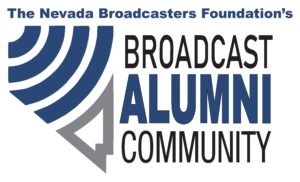Here are some of the regulatory developments of significance to broadcasters from the past week, with links to where you can go to find more information as to how these actions may affect your operations.
- The FCC’s Public Safety and Homeland Security Bureau announced that October 3 is the deadline for EAS Participants, including broadcasters, to file their annual Emergency Alert System Test Reporting System (ETRS) Form One – which provides information regarding EAS Participants’ EAS equipment and monitoring assignments along with other relevant data. While there is no nationwide EAS test scheduled for this year, the FCC requires that all EAS Participants annually update their EAS information in the ETRS database by filing an ETRS Form One.
- The FCC’s Enforcement Bureau released its first 2025 EEO audit notice targeting 300 radio and TV stations for review of their EEO programs. The FCC randomly audits approximately 5% of all broadcast stations each year regarding their EEO compliance. Audited stations and their station employment units (commonly owned stations serving the same area) must provide to the FCC their last two years of EEO Annual Public File Reports and documents showing that the stations followed the FCC’s EEO rules. Audited stations have until September 22, to upload responses to their online public inspection files. Look for an article tomorrow on our Broadcast Law Blog for more information about this audit.
- The FCC released a Direct Final Rule repealing 98 broadcast rules that the FCC identified in the Delete, Delete, Delete proceeding as obsolete, outdated, or unnecessary. These deleted rules include over-the-air subscription TV approval procedures, the requirement that radio and TV stations be equipped with specific instruments for determining station power levels, several international broadcast station technical requirements, station operating power calculation methods, and certain rules that simply provide references to FCC policies (the underlying policies are not affected by the deletion of the references). The repeal will become effective unless, by the comment deadline specified when this decision is published in the Federal Register, substantive comments objecting to the deletions are filed, in which case the FCC will provide additional notice of the changes and ask for and consider public comment before the deletions take effect.
- The FCC released a Notice of Proposed Rulemaking seeking to reexamine the Emergency Alert System (EAS) and the Wireless Emergency Alerts system. For EAS, the FCC seeks comment on the system’s effectiveness, how it could be modernized, and other issues. Comments and reply comment dates will be announced when the NPRM’s is published in the Federal Register.
- At its regular August Open Meeting, the FCC adopted an NPRM proposing significant revisions to the FCC’s procedures under the National Environmental Policy Act (NEPA) and the National Historic Preservation Act (NHPA) for determining if constructing communications facilities, including broadcast towers, will affect the environment and historical sites. In the draft NPRM, the FCC sought comment on streamlining its NEPA and NHPA review procedures following President Trump’s Executive Order directing agencies to do so. The final version of the NPRM has not yet been released.
- The FCC released a Second Report and Order streamlining and expediting earth station application processing. The changes include streamlined processes for adding or removing communication points, an expanded list of license modification types that do not require prior authorization, expanded license renewal application filing timeframes, and a 30-day “shot clock” for processing earth station renewal applications.
- The FCC released a FNPRM and Order on Reconsideration streamlining the Disaster Information Reporting System (DIRS) filing obligations, which are currently voluntary for broadcasters. The FCC did not address whether it still intends to extend DIRS reporting obligations to broadcasters as proposed under former FCC Chairwoman Rosenworcel.
- Comments were filed responding to the FCC’s July Public Notice seeking to refresh the record on whether and how the FCC should modify the national television ownership cap (prohibiting ownership interests in TV stations that reach more than 39% of the TV households nationwide), and the UHF discount (a 50% discount for UHF TV stations in calculating compliance with the national cap) (see our discussion here). Broadcasters and their trade associations overwhelmingly support relaxing or eliminating the national cap, arguing that changed market dynamics over the last two decades have rendered it unnecessary and even detrimental to competition. Many of these commenters also argue that the broadcast TV industry will cease to exist unless broadcasters can compete with the unregulated Big Tech streamers. Several commenters, including public interest groups and MVPD trade associations, argue for retaining the national cap because removing or relaxing it would lead to further consolidation of the broadcast TV industry, which, in turn, could harm broadcast workers, increase retransmission fees, reduce localism and viewpoint diversity, and damage the quality of local programming and news. Some groups also argue that the FCC lacks authority to modify or eliminate the cap – arguing that only Congress can do so. Some commenters opposed to relaxing or eliminating the cap also ask the FCC to reevaluate the UHF discount, arguing it is an outdated methodology that allows more industry consolidation than Congress intended. All comments filed in the proceeding can be found on the FCC’s website, here. Reply comments are due August 22.
- An application for review was filed against the FCC’s approval of the Paramount-Skydance Media merger, which was completed this week, allowing Skydance’s principal David Ellison to acquire a controlling stake in Paramount (see our note here). The petitioner, an unsuccessful bidder for Paramount, asserts that the merger’s approval was based on an incomplete record, was procedurally defective, and was otherwise unlawful, making claims including that the FCC failed to consider bribery allegations following Paramount’s $16 million settlement of its lawsuit with President Trump, and that the applicants failed to disclose ex parte meetings between Trump and Ellison occurring before the decision.
- FCC Commissioner Gomez also issued a statement regarding the merger’s approval, stating that the new company was “trading away fundamental First Amendment principles in pursuit of pure profit,” and that the approval “will not be the end of this Administration’s campaign of intervention in media to silence critics, gain favorable coverage, and impose ideological conformity on newsrooms that should remain independent.”
- The Enforcement Bureau took four actions against pirate radio broadcasters:
- The Bureau entered into a Consent Decree with a Pennsylvania pirate radio broadcaster which reduced the FCC’s proposed $40,000 fine against the individual to $6,000 because he was unable to pay the proposed fine and ceased pirate broadcasting. The Consent Decree requires that he pays a $34,000 penalty if he engages or assists anyone else in pirate broadcasting during its 20-year term.
- The Bureau proposed fines of $20,000 and $25,000 against pirate radio broadcasters in Providence, Rhode Island and Worcester, Massachusetts, respectively.
- The Bureau issued a Notice of Illegal Pirate Radio Broadcasting against a Newark, New Jersey landowner for allegedly allowing a pirate to broadcast from its property. The Bureau warned the landowner that the FCC could issue a fine of up to $2,453,218 under the PIRATE Radio Act if the landowner continues to permit pirate radio broadcasting from the property.
- The Enforcement issued a Notice of Violation against a Michigan LPFM station after an inspection revealed that the station was operating from an unauthorized site, the station’s EAS decoder was not operational, and the station was operating in excess of its authorized power. The station must now explain to the Bureau how it will correct the rule violations and prevent future violations from occurring.
- The FCC’s Media Bureau granted three petitions proposing changes to the TV and FM Tables of Allotments. The Bureau granted the substitution of Channel 9 for Channel 24 at Henderson, Nevada and granted the substitution of Channel 21 for Channel 12 at Portland, Oregon, allowing the petitioner’s TV stations to stay on their existing channels because they did not complete construction of new facilities for previously granted applications to move to UHF channels by the expiration dates of construction permits for those channel changes. The Bureau also granted the substitutions of Channel 276C2 for vacant Channel 244C2 and Channel 252C3 for vacant Channel 276C3 at Matador, Texas to resolve a short-spacing conflict with Channel 244C2.
- The Media Bureau reinstated and granted several California, Florida, and Wisconsin LPFM station construction permit applications. In October 2024, the Bureau dismissed the applications after finding that the applicants violated the FCC’s prohibition on a party holding interests in multiple LPFM stations because each applicant permitted the same corporate entity to appoint each applicant’s directors. The applicants stated that the common entity never existed, and that they either eliminated or would eliminate the common entity’s appointment powers. An objector argued that the applicants lacked validly appointed boards if the common entity never existed, and claimed that two of the applicants have common ownership due to close familial relationships. The Bureau disagreed, finding that the common entity did not control the applicants’ boards because it never existed, and that there was no evidence that the applicants lacked legally qualified boards when they filed their applications. The Bureau also found that the objector failed to show that the two applicants with close familial relationships had common ownership because close family relationships do not, alone, create common ownership among LPFM applicants.
On our Broadcast Law Blog, we discussed the FCC’s decision last week to delay the filing date for broadcasters’ biennial ownership reports and speculated as to what other broadcast regulatory obligations may be under review by the FCC.


